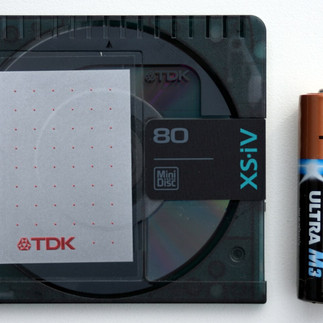The Curious Case of the MiniDisc: A Forgotten Format Deserving a Second Look
- Jake Revill
- Dec 31, 2024
- 2 min read
Remember MiniDiscs? These tiny, optical discs once promised to revolutionize music playback, but were ultimately overshadowed by the rise of CDs and, later, digital streaming. However, in a world increasingly dominated by fleeting digital files, there's a compelling argument to be made for a MiniDisc resurgence.

The MiniDisc Advantage: Durability and Versatility
Scratch Resistance: Unlike CDs, which are notoriously susceptible to scratches that can render them unplayable, MiniDiscs are far more robust. Their protective casing and optical recording technology offer significantly greater resistance to physical damage.
Superior Sound Quality: While CDs can offer excellent sound quality, MiniDiscs often boast a higher signal-to-noise ratio and a wider dynamic range, resulting in a more nuanced and detailed listening experience.
Digital Recording: MiniDiscs utilized digital recording technology, providing high-quality audio playback and the ability to record directly from a variety of sources. This versatility made them popular among audio enthusiasts and musicians.
Portability: MiniDisc players were compact and portable, making them ideal for on-the-go listening.

Why MiniDisc Over CD?
While CDs may hold a certain nostalgic appeal, their fragility makes them less than ideal for long-term storage and repeated playback. MiniDiscs, with their durability and superior sound quality, offer a compelling alternative.
Archival Potential: For music collectors and audiophiles, MiniDiscs provide a more reliable format for preserving their collections.
Revival Potential: With advancements in digital technology, it's conceivable that new MiniDisc players and recording devices could be developed, breathing new life into this once-promising format.
The Challenges
Of course, there are challenges to a MiniDisc resurgence.
Limited Availability: Finding new MiniDiscs and compatible hardware may be difficult.
Lack of Mass Appeal: MiniDiscs may not have the same broad appeal as CDs or vinyl.


Conclusion
While a full-scale MiniDisc revival may be unlikely, there's a strong case to be made for this forgotten format. Its durability, sound quality, and versatility offer a compelling alternative to the more fragile CD. As we increasingly grapple with the ephemerality of digital files, perhaps it's time to rediscover the enduring appeal of this innovative format.
Disclaimer: This is a subjective opinion, and the relative merits of different audio formats are ultimately a matter of personal preference.









Comments